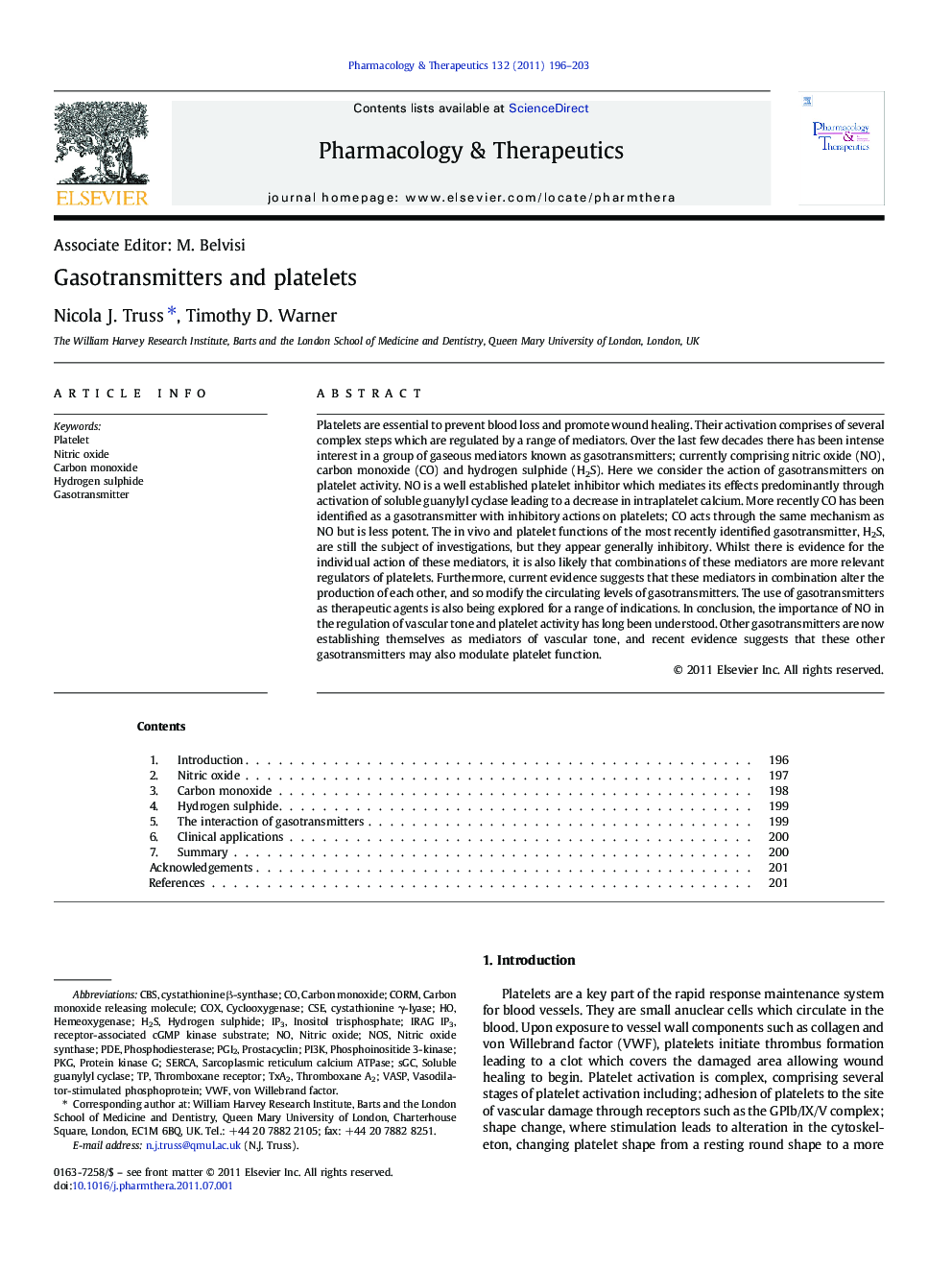| Article ID | Journal | Published Year | Pages | File Type |
|---|---|---|---|---|
| 2563343 | Pharmacology & Therapeutics | 2011 | 8 Pages |
Platelets are essential to prevent blood loss and promote wound healing. Their activation comprises of several complex steps which are regulated by a range of mediators. Over the last few decades there has been intense interest in a group of gaseous mediators known as gasotransmitters; currently comprising nitric oxide (NO), carbon monoxide (CO) and hydrogen sulphide (H2S). Here we consider the action of gasotransmitters on platelet activity. NO is a well established platelet inhibitor which mediates its effects predominantly through activation of soluble guanylyl cyclase leading to a decrease in intraplatelet calcium. More recently CO has been identified as a gasotransmitter with inhibitory actions on platelets; CO acts through the same mechanism as NO but is less potent. The in vivo and platelet functions of the most recently identified gasotransmitter, H2S, are still the subject of investigations, but they appear generally inhibitory. Whilst there is evidence for the individual action of these mediators, it is also likely that combinations of these mediators are more relevant regulators of platelets. Furthermore, current evidence suggests that these mediators in combination alter the production of each other, and so modify the circulating levels of gasotransmitters. The use of gasotransmitters as therapeutic agents is also being explored for a range of indications. In conclusion, the importance of NO in the regulation of vascular tone and platelet activity has long been understood. Other gasotransmitters are now establishing themselves as mediators of vascular tone, and recent evidence suggests that these other gasotransmitters may also modulate platelet function.
